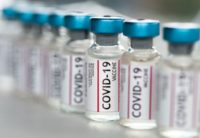10 safety mistakes that can cost you a legal case
Really doing due diligence

Unfortunately, many organizations have a false perception that merely employing someone in a safety capacity is a risk control, as in, “Your Honor, we did our due diligence in safety… see, we hired a Safety Person (points to the ‘Safety Person’).”
More so, if an incident were to happen, throwing this person under the proverbial bus and claiming that he or she didn’t properly manage safety also won’t lessen the liability of the organization.
What these organizations may fail to realize is that, when OSHA or any other oversight organization – regardless of whether the standards are voluntarily taken on or federal, state or local law or policy – ask for “managerial commitment,” there must be substance to it. Since there have been many descriptions of how to pay due diligence to safety that have been overlooked, let’s look at it from a different perspective.
Since many organizations look to lagging indicators for how much went wrong instead of increasing prevention, let’s look at how things can go wrong. Here is a breakdown of exactly how to lose in court, a deposition, an audit or another matter of oversight. It’s easier than many think.
Here is a step-by-step guide on how to be found complicit, negligent or otherwise guilty:
1- A hazard analysis is not conducted.
You are not able to explain what hazards exist, where they exist, how they exist and/or who’s exposed to them. This alone will cause the case to be lost from the start because, without a hazard analysis, there’s no chance of the hazard(s) being controlled or the hazard controls being communicated, validated, measured or even investigated if something goes wrong. An investigation for a hazard that hasn’t been identified will inevitably show one root cause – the hazard was not identified, assessed or controlled.
Important note: Be thorough with a proactive hazard analysis – even if there’s not a defined regulatory standard for the hazard. The General Duty Clause applies to all hazards. Don’t try to reverse-engineer your hazard analysis by checking boxes based on what’s in the Code of Federal Regulations, 1910 or 1926, or even what’s in The Joint Commission, ANSI or other standards.
2- Hazard controls are not implemented.
For each hazard in the analysis, a control is needed. Some of these controls are spelled out in the Code of Federal Regulations. Some are further spelled out in other standards. Some have guidelines without standards (workplace violence, ergonomics, etc.). Still, these controls are bare minimums.
The hierarchy of controls goes above and beyond them. Can the hazard be eliminated? Substituted? Engineered or administered to a lower exposure level? Is there ever-better PPE? Is the PPE available, accessible and convenient for use and, does it fit? And for any hazard control implemented, have all at-risk employees been trained on the hazard control expectation and use of the control?
3- You don’t communicate hazard control expectations and/or don’t have evidence of the communication.
Even if the hazard controls have been implemented and employees have been trained, if they haven’t received consistent and recurring communication of these expectations, this is a cause for a lawyer to find fault.
4- Hazard controls are not validated as being used appropriately.
Even if the hazard controls are implemented and employees are trained and have been communicated with, if the hazard controls haven’t been validated as being used in real-time, operationally, fault can be found.
With no leading indicators, how do we know that the team in engaged in ensuring safety (are people looking for safe work conditions and safe work practices?) and how do we know that the safe work practices are taking place? Make sure the findings from the leading indicators are being transferred back into the hazard analysis and controls; otherwise, the leading indicators aren’t doing much or any good
5- Incidents and exposures are not measured.
Measurements are needed to track continual improvement. For many organizations, this recordkeeping is due to OSHA and needs to be posted each year. Also, without the leading indicators, even if incidents are tracked and measured and there’s a reduction, how would we know the reduction is reliable and valid?
6- Incidents and exposures are not investigated.
If incidents and/or exposures are happening but not being investigated, how would you know what happened, how and why? How would you know what needs to happen to prevent future incidents and exposures?
7- Corrective measures are not transferred from the investigations back into the hazard analysis and controls.
Without the findings being used for improvements to perpetuate the safety cycle, they’re not doing any good.
8- Nothing is documented.
If there’s no evidence that any of these actions took place, a lawyer will create a case that they didn’t.
9- Actions can’t be explained.
If you’re a leader in the organization but can’t explain what hazards exist, who’s at risk, what’s being done to control the hazards, how it’s being communicated, how it’s being validated, what the current status is as far as safety and what’s caused it, this will be a problem.
10- Blame is put on the employee.
If the organization hasn’t done diligence to safety and goes to blame an incident on the employee who was injured or sickened, this is the very essence of “blaming the victim.”
Ample opportunities exist to be found negligent, complicit and otherwise guilty in a safety case. It takes a manageable amount of diligence and effort to prevent this entire situation. After all, if you already have your “Safety Person” on staff, why not let him or her help the team instead of being called into the game as a legal stop-gap?
Looking for a reprint of this article?
From high-res PDFs to custom plaques, order your copy today!





